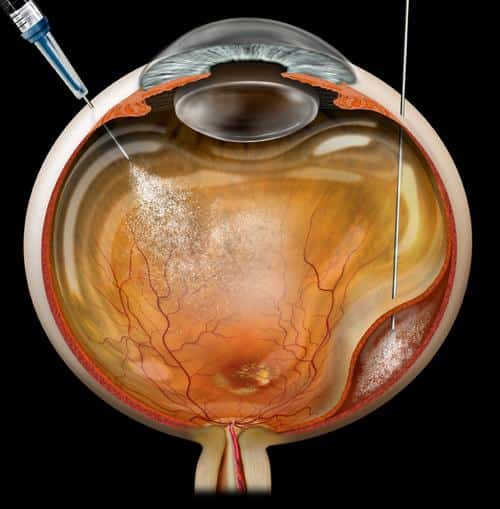
Retinal Injections
Description of retinal injections:
- Retinal injections is a procedure of injecting the required medicine into the GEL (vitreous) of the eye.
- Why does an injection need to be given? can we not use drops instead? the unique structure of the eye with its multiple barriers prevent drops from reaching the retina. if we were to compare the structure of the eye to a coconut, the retina is the layer similar to the white inner portion of the coconut. no matter how many times one puts drops, they will not reach inside in required quantity.
- There are several advantages of direct injections but the most important is to achieve required dose at the retina. It also increases the duration of effect of the medicine.
Common indications of intravitreal injections:
- Wet age related macular degeneration (Wet ARMD) - CNVM, Polyps
- Diabetic retinopathy: diabetic macular oedema
- Vascular occlusions: branch retinal vein occlusion and central retinal vein occlusion.
- Infections/endophthalmitis.
- Tumours.
Procedure of retinal injections:
- The injections are absolutely painless and there is nothing to be anxious about. majority of our patients have a smile post injection.
- The procedure is done in the operation theatre/sterile room.
- Few drops of the anaesthetic are instilled into the eye to adequately numb the surface after which the medicine is injected into the eye through the white part using a very tiny needle.
- The whole procedure takes just a few seconds.
- There is no patch after the procedure.
Post procedure of intravitreal injection :
- Though there is no patch, patients are requested to avoid contact with dust, water for 1-2 days to reduce the chances of infection
- They can resume work the same day or at most the next morning
- One can do all routine activities like reading, writing and watching television on the same day itself
- One may also resume office the next day.
